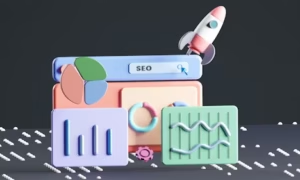Are you aware of how long visitors would wait for your site to load on their average device? About 3 seconds. If any longer than that, most users will have already clicked right out of your site’s window without even giving your business a second look. Surprising, right? In the much-acclaimed advanced world, nothing is as fantastic as being fast. If your Squarespace website is as slow as a turtle on a rainy day, then apart from irritating the visitors, you will also lose your rank in search engine results.
Google has recently stated that it considers swift website loading to be important, so Squarespace speed optimization is an important element to try to meet. Slow site performance leads to increased bounce rates, lost opportunities, and, in some extreme cases, revenue. For instance, research reveals that the probability of visitors leaving a website increases significantly with every second that it takes to load.
The good news? Speeding up your Squarespace website does not have to be complicated, and no technical degree is required. With a few key actions, it is possible to make your website extremely fast, improve the satisfaction of visitors, and start flying up through the search engine rankings.
Well, how does one optimize their site for speed without compromising on the beautiful design that Squarespace offers? This blog post will give you practical steps on how you can ramp up the speed of your website, make it more user-friendly, and cut a neat figure before Google.
So you are all set to get started and make your website faster and more successful? Let’s go!
Key Takeaways
- Compress images and optimize them for the web to improve load times.
- Choose lightweight templates and limit third-party scripts to reduce unnecessary overhead.
- Implement AMP and browser caching to boost speed, especially for mobile users.
- Regularly audit your site’s performance and fix high-impact bottlenecks promptly.
Before you go straight to the techniques, understand…
Why Website Speed Matters
Let’s begin with the fundamentals of why speed is actually important before discussing the various optimization strategies.
Boosts SEO Rankings
Google is known to consider page speed when determining a site’s ranking. Not only do fast websites rank better with search engines, but they are also beneficial for visitors. This means that a slow-loading site could cause you to lose your first-page ranking, which is a big setback in terms of visibility and traffic.
Improves User Experience
Do you remember visiting a website that took so long to fully load? It’s frustrating, right? Research further reveals that customers’ satisfaction can be lowered by as much as 16% if a one second delay is imposed. A fast site is easier to navigate by the visitors, which makes them more inclined to complete a desired action.
Essential for Mobile Users
Since over 50% of all web traffic is via mobile devices, having a fast-loading website is essential. Users accessing the site through their mobile devices usually encounter issues such as slow connectivity, and hence, speed optimization is of particular importance to them.
Implementation Plan for Squarespace Speed Optimization
1. Optimize Images for Web
Squarespace is famous for its beautiful templates, but huge clear images enlarge the loading time of the site.
– What’s the Issue?
Using high-definition photographs increases the page size, making it take longer to load. A single high-definition image can take a couple of seconds to load, not to mention the experience on a mobile device.
– How to Fix It:
Before uploading images on Squarespace, you can try compressing the particular image using TinyPNG or Compressor.io. Such tools can prove very effective in cutting down file sizes without affecting their quality. However, the images should also be resized to fit the dimensions of your design as needed.
– Pro Tip:
It is recommended to use JPEG for photos, PNG for graphics, WebP for advanced compression. If you upload these optimized images on Squarespace, you are guaranteed to have faster load time.
2. Choose a Lightweight Template
All Squarespace templates are unique, but they are not all the same. Some need more resources than others, which sometimes hampers website loading speeds.
– What’s the Issue?
Sites, where templates use too many animations or background videos or have complex designs, will take time to load.
– How to Fix It:
Choose performance-optimized templates such as Brine or Pacific. They are meant to be aesthetically pleasing without being sacrificed with speed at which these templates work.
– Pro Tip:
Test every template on a staging site to check the speed and other performance parameters before you launch your site.
3. Limit Third-Party Scripts and Plugins
Third-party resources such as chatbots, trackers, comments, share buttons, and any other external code can be helpful to the user but also slow down the page’s loading time.
– What’s the Issue?
Each external script is an extra HTTP request, which makes your site slower.
– How to Fix It:
Scan your site for any third-party scripts that load on your site and might not be necessary, and eliminate them if possible. As for scripts which have to stay, it is better to use asynchronous loading since it does not prevent other components from loading.
– Pro Tip:
It is important to know how third-party scripts affect the website. Many tools are available for that, such as GTmetrix or Google PageSpeed Insights.
4. Enable Browser Caching
To speed up the page loading process, browser caching means the storing of resources such as images and CSS for future visits into cache.
– What’s the Issue?
If caches are not implemented, browsers need to download all resources every time a person comes to your website, causing slow rendering.
– How to Fix It:
Although Squarespace employs server-side caching by default, you can insert code to accomplish browser caching for further performance.
– Pro Tip:
Using Pingdom or WebPageTest is a great way to check that your caching setup is functioning properly.
5. Reduce Redirects
Redirects are usually needed, but every time you use one, it results in one more HTTP request, which is not good for your site.
– What’s the Issue?
Multiple redirects slow down the loading time of a page and it can be annoying to the user.
– How to Fix It:
Spend time reviewing your site using Screaming Frog to find out which redirects are unnecessary and need to be removed.
– Pro Tip:
Do not use multiple redirects, where a redirect leads to another redirect. Keep it simple and direct.
6. Implement AMP for Blog Posts
AMP stands for Accelerated Mobile Pages, which is essentially a cached version of websites that loads on mobile devices within seconds.
– What’s the Issue?
Mobile users often experience slower load times due to weaker internet connections.
– How to Fix It:
To switch on AMP for your Squarespace blog posts, go to Advanced Settings.
– Pro Tip:
AMP pages should be tested at least weekly using the Google Mobile-Friendly Test to check speed and usability compliance.
7. Optimize Fonts
Choosing the proper fonts to make your site stand out is always a good idea, but using far too many custom fonts can really slow things down.
– What’s the Issue?
Custom fonts also demand more HTTP requests, which contribute to the total loading times.
– How to Fix It:
Use no more than two fonts, and if at all possible use only web-safe fonts. Adjust the font-display settings to “swap” to prevent rendering delays.
– Pro Tip:
The fonts selection in Squarespace is also designed with performance in mind, so try not to link your own fonts.
8. Audit and Fix Performance Bottlenecks Regularly
The way to effectively manage the speed of the website is to constantly check its performance regularly.
– What’s the Issue?
In the long run, as more content is uploaded, the site will start lagging.
– How to Fix It:
Tools such as Website Speedy have to be used in order to diagnose your site. Certainly, it is recommended to pay attention to the tasks highlighted by such tools, for example, large images or non-optimized scripts.
– Pro Tip:
Conduct these audits at least once a month or when there are major changes to the website.
Factual Insights
- Google states that 53% of mobile users lose their patience and exit a site if it takes 3 seconds or more to load.
- Websites that load in under 2.5 seconds have an average 24% higher conversion rate compared to slower sites.
- Every 1-second delay in page response can result in a 7% reduction in conversions.
Conclusion
The key to any Squarespace site is speed. By employing these strategies for Squarespace speed optimization, you can enhance user satisfaction, reduce bounce rates, and rank higher in search engine results.
Want to save time and effort? Use our Website speedy tool to diagnose your site and get expert advice on how to enhance its functionality. Stop struggling with a slow-loading site and prevent it from hindering your progress. Launch your optimization today and see your site glowing!
About Bio:
This article is written by Ishan Makkar, the founder of WebsiteSpeedy. A web performance enthusiast, Ishan is on a mission to help business owners speed up their websites. His innovative tool optimizes website performance, ensuring faster load times, smoother user experiences, improved Google rankings, and, most importantly, increased conversions.



































